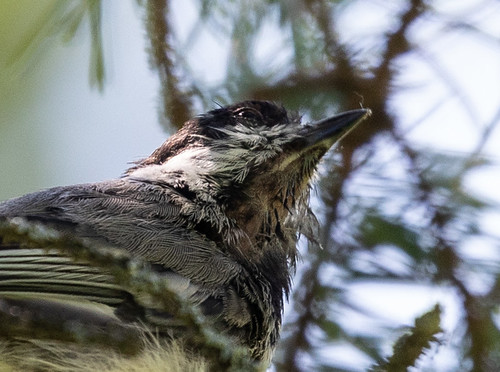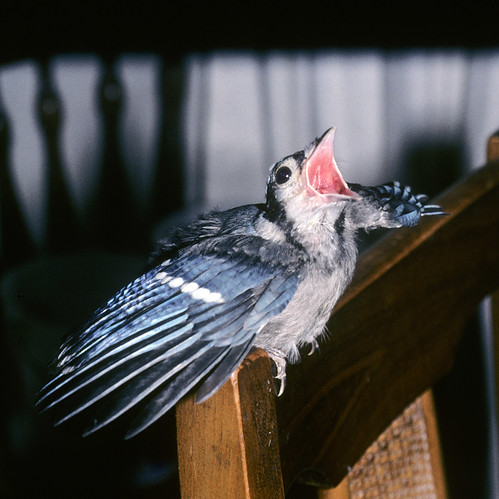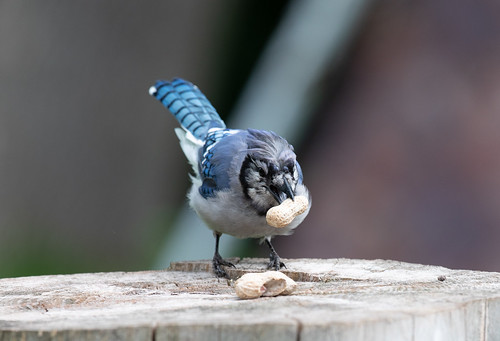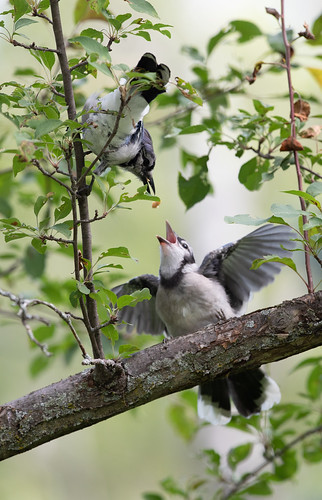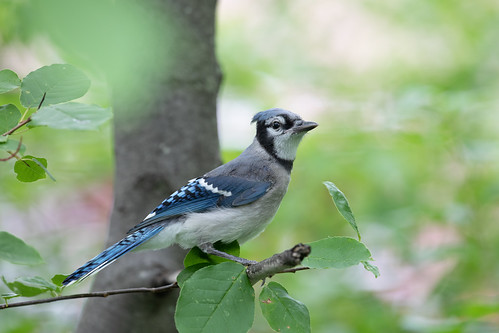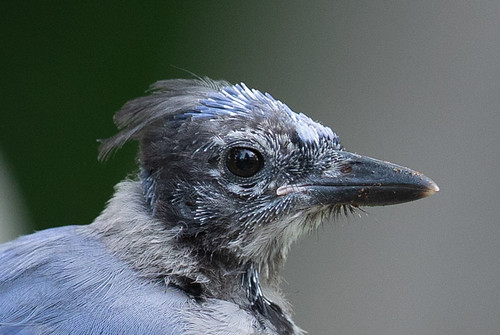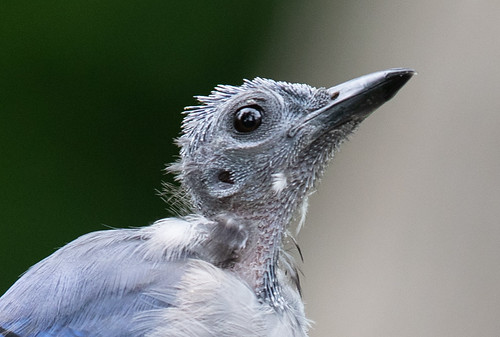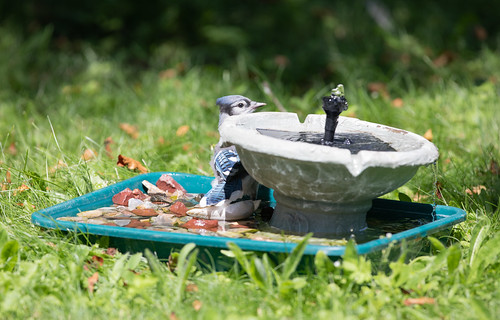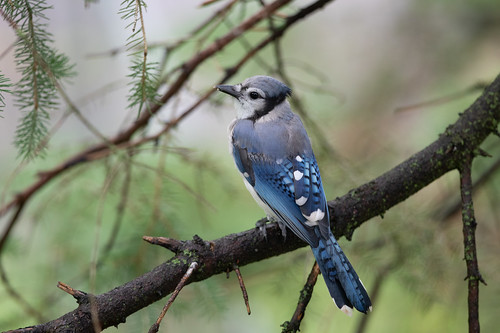On August 1, I did my monthly Zoom presentation about the birds of August, and one of the things I talked about was how scruffy chickadee and Blue Jay adults look right now, even as the babies are in perfect plumage. Those feathers the adults have been sporting for a full year are getting worn, making the birds look bedraggled to begin with, but as they fall out, before the new feathers emerge, the birds can look pretty miserable as well.
I have a good number of bedraggled adult chickadee photos...
...but had to obtain a photo of a bald Blue Jay from someone else for my presentation. And before this summer, the only photo I had of an adorable baby jay begging for food was one I took when I was a rehabber—the bird is sitting on my dining room chair back, so as adorable as it is, it’s clearly not in natural habitat.
A few weeks ago, I got photos of one family of jays, with some pictures of the babies begging.
Those parents didn’t trust me, so they always led the babies where I couldn’t see them actually feeding them. Even when coming for peanuts, they’d scream bloody murder if I got too close to a fledgling.
But since I did that program, I’ve gotten better pictures of Blue Jays than ever before in my life, because there’s been a sea change in how cooperative they are. I’ve been feeding them peanuts since spring, always whistling before I set them out, and little by little, the jays have come to recognize me. On August 7, their insistent babies were begging so desperately that the adults started approaching closer and closer to me and my camera when I placed peanuts nearby and whistled. At first, they did not approve of my camera, which has a huge lens, and were quite skittish and even agitated if I held it up, but they started noticing me taking photos of squirrels and more tolerant birds, which always survived the ordeal.
Even so, at first the jay would barely land to grab a peanut and fly off, but as they got used to me, they alighted, studied all the peanuts, and sometimes even picked up one or two to choose the heaviest one before flying off. Their impatient fledglings would wait impatiently in my nearby apple tree, and soon I was clicking away to my heart’s content.
The fledglings are absolutely adorable, and once the parents started tolerating me and stopped squawking to warn the fledglings about me, I got some lovely close-ups.
I also got some photos of the parents at close range, but most people wouldn’t call those photos nice. One parent looked scruffy but still had plenty of head feathers—it is molting some at a time rather than all at once.
The other one is very bald, revealing the dark skin and large ear holes. Head feathers not only give the Blue Jay its perky crest and lovely markings—they’re also thick, making the head appear large. The bald bird shows quite clearly how tiny the bird's head actually is.
Pinfeathers are emerging, so at least the poor thing won’t be bald for too long, and nature is kind enough to put birds through this before nights are cold enough to cause hypothermia. Blue Jays seem to vary individually in whether they molt those head feathers in sequence or all at once—my education Blue Jay Sneakers always molted all her head feathers simultaneously, but another jay I had for several years molted his feathers more gradually, and sometimes I couldn’t even tell he was molting by his appearance—just by the feathers I’d find at the bottom of his cage.
I’m having so much fun watching these Blue Jays that it’s easy to forget that they got a lot of protein this week from my baby wrens. When I realized that the parents were studying the raspberry patch to pluck tiny, newly fledged wrens I went indoors and stayed put.
Blue Jays spend a lot of time drinking and bathing, so mine have been spending quite a bit of time at my birdbaths. But bathing birds are extremely vulnerable to predation, and so the adults have been quite wary, yelling out warnings if they can see me at all when the young are bathing. I've taken most of my bathing photos from a distance, cropping the pictures a lot.
Blue Jay migration can start kicking in in August, as young grow independent and adults finish their molts. Having some local birds who know me will make the birds passing through more tolerant—Blue Jays communicate their experiences well, so each one doesn’t have to figure out everything in a strange environment on its own.
This year of pandemic has been so strange and confining. Who’d have thought that some of the most familiar birds of all could give me so many wonderful new experiences? I hope you’re finding lots of joys where you are, too, dear reader.


